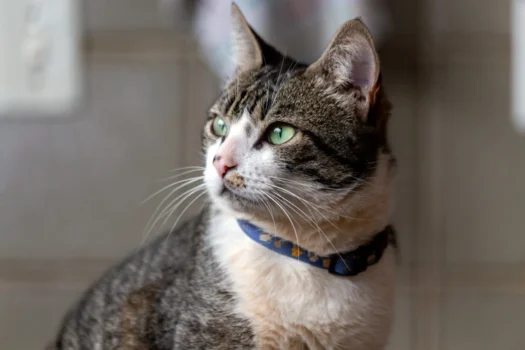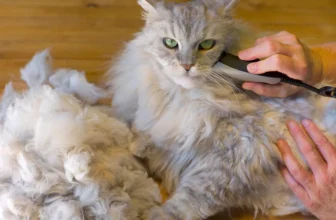Have you ever tried trimming your American Wirehair’s nails only to be met with resistance or even aggression? Nail trimming can be a daunting task for cat owners, but it’s an essential part of maintaining your pet’s health and comfort. In this article, we’ll guide you through the process of trimming your American Wirehair’s nails safely and effectively. From choosing the right tools to relaxing your cat during the trimming process, we’ll cover all the aspects of nail trimming that you need to know. By the end of this article, you’ll have the knowledge and confidence to trim your cat’s nails like a pro!
Why Nail Trimming is Important for Your American Wirehair

Keeping your American Wirehair’s nails trimmed is an essential part of your cat’s overall hygiene. Although it may seem like a daunting task, regular nail trimming can provide a host of benefits for your furry friend. In this section, we will explore the various reasons why nail trimming is crucial for your American Wirehair. From preventing health issues to protecting your furniture, there are many reasons to stay on top of your cat’s nail care routine. So, let’s dive in and see why this task is so important. To learn more about nail care for Wirehair cats, check out our guide on nail care for Wirehair cats.
Keeping Your Cat Comfortable
Keeping your American Wirehair comfortable during nail trimming is important to ensure they don’t develop an aversion to the process. The following tips can help:
- Ensure a Comfortable Environment: Choose a quiet and cozy room to trim your cat’s nails. Place a soft mat or towel on a stable surface for your cat to sit on comfortably.
- Use a Calm Voice: Speak soothingly and softly to your cat throughout the process. This will help keep them at ease.
- Provide Treats: Offer small treats or rewards to distract your cat and keep them calm during the process. Make sure the treats are healthy and appropriate for cats.
- Don’t Rush: Take your time and don’t rush the process. If your cat becomes stressed or agitated, take a break and try again later.
- Monitor Body Language: Keep an eye on your cat’s body language. If they show signs of discomfort or anxiety, stop immediately.
Remember that discomfort during nail trimming can lead to long-term aversion, making it important to follow these tips. It’s also essential to understand your American Wirehair’s unique nail anatomy which can be found on this page and learn about nail trimming alternatives that may be appropriate for your cat on this page. Additionally, knowing about common nail problems that American Wirehair cats face can also help you keep your cat safe and comfortable during the process, which is discussed in our article on common nail problems.
Preventing Health Issues
Keeping your American Wirehair’s nails trimmed is not just about aesthetics and protecting your furniture, it’s also about preventing potential health issues. Overgrown nails can cause discomfort and pain for your cat, and can even lead to infections or other foot-related problems. Here are some ways that trimming your cat’s nails can help prevent health issues:
- Reducing the Risk of Infection: Long nails can harbor dirt and bacteria, which can cause an infection if the nail breaks or gets punctured. Trimming your cat’s nails regularly reduces the risk of infection by keeping their paws clean and healthy.
- Preventing Overgrowth: Overgrown nails can curl under and grow into the paw pad, causing pain, inflammation, and even infection. Keeping your cat’s nails trimmed prevents overgrowth and keeps their paws healthy.
- Improving Mobility: Long nails can also affect your cat’s mobility by making it difficult for them to walk or climb properly. Regular nail trims can help prevent this issue and keep your cat active and agile.
- Maintaining Joint and Muscle Health: Overgrown nails can cause an imbalance in your cat’s gait, which can put strain on their joints and muscles. This can lead to discomfort and even arthritis over time. Trimming your cat’s nails helps maintain their joint and muscle health and keep them pain-free.
Regular nail trimming can go a long way in preventing potential health issues for your American Wirehair. However, it’s important to make sure you trim their nails safely and effectively. Read on to learn how to choose the right tools, prepare your cat, and trim their nails without causing any harm.
Protecting Your Furniture and Home
As a cat owner, you may have experienced the unpleasant sensation of finding scratch marks all over your furniture and home. American Wirehairs have sharp claws that they use for various reasons, such as marking their territory and stretching their muscles. However, these same claws can cause damages to your beloved couch or curtains. This is why it’s crucial to protect your furniture and home by regularly trimming your cat’s nails.
One of the benefits of nail trimming is that it can limit the damage caused by your American Wirehair to your home. Cats that are used to scratching as a way of exploring their environment may damage furniture and leave scratch marks on walls or floors. By keeping your cat’s nails trimmed, you can effectively limit this damage.
In addition to protecting your belongings, regular nail trimming can also provide a more comfortable environment for you and your cat. Long nails can get stuck in carpets or fabrics and cause discomfort for your cat while walking or climbing. Cats with long nails can accidentally scratch you or your family members, which can be painful and even lead to infections.
Trimming your cat’s nails is a critical part of cat ownership that will help reduce the damage done to your furniture and home. It will provide a more comfortable living environment for both you and your American Wirehair. So, don’t hesitate to take the time to regularly trim your cat’s nails and save your household from unpleasant scratches.
Choosing the Right Tools
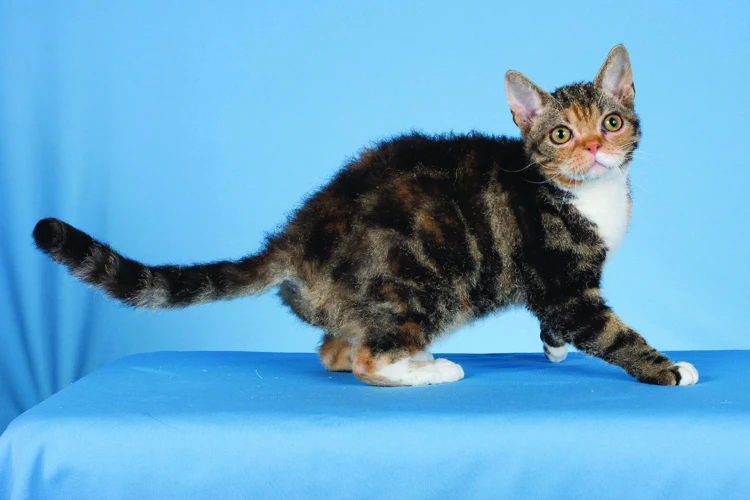
When it comes to trimming your American Wirehair’s nails, having the right tools is essential. Not all nail clippers or grinders are created equal, and using the wrong ones can lead to discomfort and even injury for your feline friend. In this section, we will explore the different types of tools available for nail trimming and help you choose the one that is best suited for your cat’s needs. So, let’s dive into the world of cat nail tools and find the perfect one for your American Wirehair.
Nail Clippers for Cats
Nail Clippers for Cats:
Choosing the right nail clippers for your American Wirehair is essential to ensure a safe and effective nail trimming experience. There are many different types of nail clippers on the market specifically designed for cats, including:
- Scissors Clippers: These are the most common nail clippers for cats. They work by cutting the nail in a scissor-like motion. Make sure to choose clippers that are small enough for your cat’s nails, as larger clippers may cause injury.
- Guillotine Clippers: Guillotine clippers have a small hole in which you place your cat’s nail, and a blade slides across to cut the nail. These are great for cats with small or thin nails.
- Pliers Clippers: These clippers work like pliers, with two blades that come together to cut the nail at the tip. They are often useful for larger cats or for cats with thick nails.
No matter which type of nail clipper you choose, make sure it is sharp and clean before use. Dull clippers can crush the nail, making it more difficult and painful to trim. Additionally, dirty clippers can cause infection if they come into contact with an open wound.
Once you have your nail clippers, it’s important to keep them within easy reach for nail trimming sessions. This will help reduce stress for your cat, as they won’t associate the clippers with only nail trimming time. You may also want to consider having treats or toys nearby as a reward for good behavior during the process.
Nail Grinders for Cats
When it comes to trimming your American Wirehair’s nails, nail grinders can be a great alternative to traditional clippers. Nail grinders are electric tools that file down your cat’s nails instead of cutting them. This can be a safer option for cats who are afraid of clippers or for owners who are worried about accidentally cutting the quick.
Advantages of Nail Grinders
One advantage of nail grinders is that they allow for more precise control over the length of your cat’s nails. They can also be less likely to cause splintering or splitting, which can be a common issue with clippers. Additionally, grinding your cat’s nails can be a more comfortable experience for both you and your cat.
Choosing the Right Nail Grinder
When looking for a nail grinder for your American Wirehair, there are a few things to consider. One of the most important factors is the size and power of the grinder. Look for a grinder that is specifically designed for cats and has variable speed settings so you can adjust it to your cat’s comfort level.
Another consideration is the noise level of the grinder. Some cats may be frightened by the sound and vibration of the grinder, so it’s important to choose a model that is relatively quiet.
How to Use a Nail Grinder
Before using a nail grinder on your cat, it’s important to get them used to the sound and feel of the tool. You can do this by turning it on and letting your cat sniff it, or by using treats or positive reinforcement to create a positive association with the grinder.
When you’re ready to begin grinding your cat’s nails, start by holding the grinder in one hand and your cat’s paw in the other. Gently press the grinder against the tip of the nail, being careful not to push too hard or for too long in one spot. Slowly work your way down the nail, checking frequently to make sure you’re not getting too close to the quick.
Comparison of Nail Clippers vs Nail Grinders
Here’s a table comparing the pros and cons of traditional nail clippers versus nail grinders:
| Nail Clippers | Nail Grinders | |
|---|---|---|
| Pros | Easy to use and widely available | Allow for more precise control over nail length; less likely to cause splintering or splitting |
| Cons | Can be difficult to use without cutting the quick; more potential for pain or discomfort | Can be noisy and may take longer to use |
Ultimately, the choice between nail clippers and nail grinders will depend on your personal preference and your cat’s individual needs and comfort level. With a little patience and practice, however, both tools can be effective options for trimming your American Wirehair’s nails safely and effectively.
Other Tools You May Need
When it comes to trimming your American Wirehair’s nails, having the right tools is essential for a successful and safe experience. In addition to nail clippers or grinders, there are a few other tools that you may find useful.
Nail File: While nail clippers and grinders are great for trimming your cat’s nails, a nail file can help smooth out any rough edges and prevent your cat from snagging their nails on furniture or carpets.
Towel or Blanket: Having a towel or blanket on hand can help to keep your cat calm and prevent them from getting too worked up during the nail trimming process. Simply wrap your cat in the towel or blanket, leaving their paw exposed for trimming.
Styptic Powder: Accidents can happen, and if you accidentally cut your cat’s quick, styptic powder can help to stop any bleeding. It’s important to have this on hand before beginning the trimming process, just in case.
Treats: Rewarding your cat for good behavior is important, and treats can make a big difference in how they react to the nail trimming process. Keep some of your cat’s favorite treats on hand to give them a reward after their nails have been trimmed.
Having these extra tools on hand can help to make the nail trimming process go smoothly and reduce any stress or anxiety your American Wirehair may feel. Remember to take your time and never force your cat to undergo the trimming process if they are particularly resistant.
Preparing Your Cat for Nail Trimming
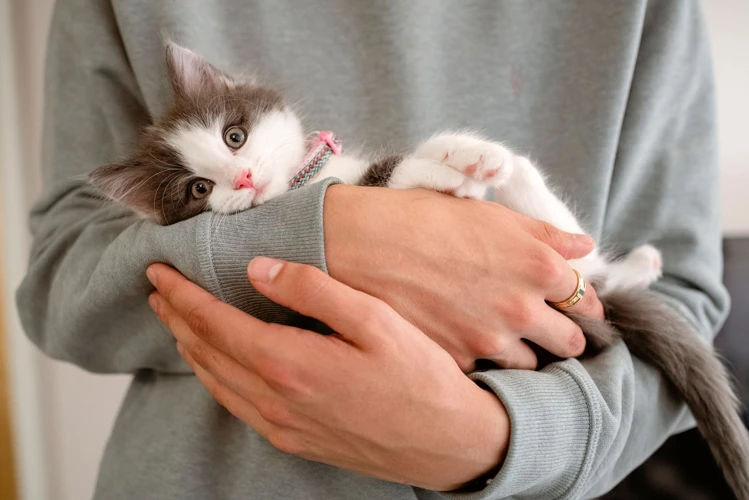
Preparing your American Wirehair for nail trimming can be a daunting task, but it’s important to do it right to ensure your cat’s safety and comfort. You may be unsure of what tools to use or how to get your cat used to the trimming process. It’s important to keep in mind that proper preparation is key for a successful nail trimming session. In this section, we’ll cover important aspects such as the right time to trim your cat’s nails, how to get them used to the process, and how to hold them for trimming. So let’s get started and make the nail trimming experience as stress-free as possible for both you and your beloved feline friend.
The Right Time to Trim Your Cat’s Nails
Determining the right time to trim your American Wirehair’s nails can be perplexing for many cat owners. There are different factors to consider such as the cat’s age, activity level, and lifestyle. Here is a table that highlights the different factors and when it is appropriate to trim your cat’s nails:
| Factor | Trimming Frequency |
|---|---|
| Age: |
Kittens – every 2 to 3 weeks Adult cats – every 4 to 6 weeks Senior cats – every 2 to 4 weeks |
| Activity level: |
Indoor cats – every 4 to 6 weeks Outdoor cats – every 2 to 3 weeks Active cats – every 2 to 3 weeks |
| Lifestyle: |
Scratchers – every 2 to 3 weeks Non-scratchers – every 4 to 6 weeks Claw sharpeners – every 2 to 3 weeks |
Kittens: Kittens have sharp claws that can hurt their littermates or owners. Trimming their nails every 2 to 3 weeks can prevent injuries.
Adult cats: Adult cats are generally less active and their nails grow slower, so they can be trimmed every 4 to 6 weeks.
Senior cats: Senior cats may have mobility issues or arthritis, so they may not scratch as much. However, their nails can become overgrown and thick, leading to potential health problems. Trimming their nails every 2 to 4 weeks can ensure their nails stay healthy.
Indoor cats: Indoor cats are less likely to scratch on furniture or carpets, so their nails can be trimmed every 4 to 6 weeks.
Outdoor cats: Outdoor cats scratch on trees or other surfaces, which can wear down their nails. However, their nails may still become overgrown, so trimming them every 2 to 3 weeks is recommended.
Active cats: Cats that are active and play often can naturally wear down their nails. However, regular trimming every 2 to 3 weeks can prevent their nails from becoming too long.
Scratchers: Cats that love to scratch on posts or furniture can wear their nails down but also can easily scratch or damage furniture or carpets if their nails are left too long. Trimming every 2 to 3 weeks is recommended.
Non-scratchers: If your cat doesn’t scratch on anything, they may require less frequent trimming, every 4 to 6 weeks.
Claw sharpeners: Cats that sharpen their nails by digging into carpets or furniture will need more frequent trimming, every 2 to 3 weeks, to prevent damage to your home.
Getting Your Cat Used to the Trimming Process
Getting Your American Wirehair Used to the Trimming Process
Introducing nail trimming to your American Wirehair can be a daunting task. It’s important to remember that cats are creatures of habit and introducing a new routine can cause anxiety and stress. Here are some tips to help familiarize your cat with the trimming process:
| Step 1: | Handle your cat’s paws frequently |
| Details: | Before initiating the nail trimming process, acclimate your cat to having its paws touched and held. This technique will allow your cat to feel comfortable when its paws are handled during nail trimming. |
| Step 2: | Gradually introduce the nail trimming tools |
| Details: | Get your cat used to the sound and sight of the nail trimmer tool before actual trimming. Let your cat sniff the tool and touch its paws gently with it to establish a sense of familiarity and comfort. |
| Step 3: | Offer treats for positive reinforcement |
| Details: | Reward your cat with treats when it behaves calmly. This positive reinforcement will make your cat feel more secure and comfortable, and establish a positive association between nail trimming and a positive experience. |
| Step 4: | Start with small trimming |
| Details: | Begin with one or two nails and gradually increase the count. This technique will allow your cat to establish trust and acclimate to the trimming process over time. |
| Step 5: | Stop if your cat becomes anxious or agitated |
| Details: | If your cat starts to show signs of anxiety or agitation, stop the trimming process and try again after a while. It’s crucial to ensure that your cat feels safe and secure during the trimming process and stays comfortable throughout. |
Remember, introducing nail trimming to your American Wirehair is a gradual process. Start slow, be patient and use positive reinforcement. Over time, your cat will become comfortable with nail trimming and it will become a routine that benefits both you and your feline companion.
Relaxing Your Cat for Nail Trimming
Keeping your American Wirehair relaxed during nail trimming is crucial for a successful and safe session. Here are some tips to help your furry friend keep calm and comfortable:
| Create a Calm Environment | Use Treats to Distract | Try a Soothing Massage |
|---|---|---|
| Choose a quiet room with no distractions to perform the nail trimming. Loud noises or sudden movements can startle your cat and make them anxious. | Keeping your cat distracted can help reduce their stress levels. Offer them treats or a special toy to keep their attention away from the nail trimming. | Gently massaging your cat’s body and paws can help relax them before the trimming session. Start by stroking their back and working your way down to their paws. |
| Use dim lighting or natural light to create a peaceful atmosphere. | Offer the treats gradually during the session to keep your cat engaged and less stressed. | Small circular motions on their paws can help improve circulation and relax their muscles. |
| Covering your cat’s eyes with a towel can also help reduce their anxiety. | Avoid using treats that are high in calories or sugar, as this can lead to weight gain and other health issues. | Be gentle and avoid applying too much pressure on your cat’s paws, as this can cause discomfort. |
By following these tips, you can help create a stress-free environment for your American Wirehair and make nail trimming a more enjoyable and safe experience for both you and your furry companion.
How to Hold Your Cat for Nail Trimming
One of the most important factors in trimming your American Wirehair’s nails is holding them properly. This will not only keep your cat safe during the trimming process, but it can also ensure that you are able to trim their nails effectively.
Method 1: the scruff technique
The scruff technique involves holding your cat gently but firmly by the scruff of their neck. This is the same way that a mother cat carries her kittens. With this method, you’ll need to use your other hand to hold onto your cat’s paw and adjust their position as needed.
Method 2: the towel technique
Some cats may be more comfortable being wrapped in a towel for nail trimming. To use this method, wrap your cat snugly in a towel, being careful not to wrap it too tightly. This will help your cat feel more secure and prevent them from moving around too much.
Method 3: the belly-up technique
For this technique, gently lift your cat and place them on their back in your lap. Use one hand to hold their head still, and gently extend their leg with your other hand. This method can work well for cats who are comfortable being held on their backs.
No matter which holding technique you use, make sure to always keep a close eye on your American Wirehair and be aware of any signs of discomfort or distress. If your cat becomes agitated or seems uncomfortable during the trimming process, take a break and try again later.
Trimming Your Cat’s Nails Safely
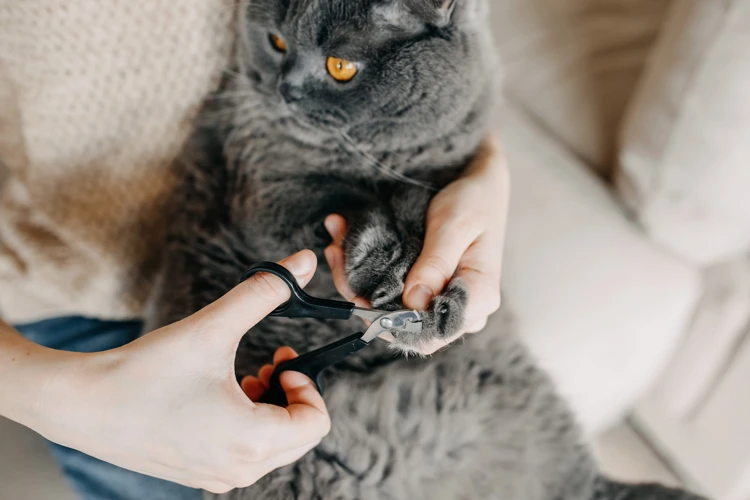
As a cat owner, trimming your feline friend’s nails can be a daunting task. However, it is an essential part of cat grooming, especially for the American Wirehair breed. Trimming your cat’s nails not only keeps them comfortable but also prevents health issues and protects your home. When it comes to trimming, safety is a top priority. It’s important to use the right tools and follow proper techniques to avoid injuring your cat. In this section, we’ll cover everything you need to know to trim your American Wirehair’s nails safely and effectively.
Clipping Your Cat’s Nails with Clippers
When clipping your American Wirehair’s nails, it’s essential to choose the right tool for the job. Nail clippers designed specifically for cats are the best option. Follow these steps to clip your cat’s nails effectively:
- Gather Your Supplies: To begin, gather all necessary supplies, including cat nail clippers, treats, and styptic powder.
- Sit in a Comfortable Spot: Choose a quiet area where your cat feels comfortable. Place your American Wirehair in your lap, or sit beside them on the floor.
- Pick Up Your Cat’s Paw: Gently pick up one of your cat’s paws, being careful not to squeeze too hard or cause discomfort.
- Identify the Quick: Look for the pink area of the nail to identify where the quick is located. Avoid cutting this area, as it is where the blood vessels and nerves are located.
- Clip the Nail: Using the cat nail clippers, carefully clip the tip of the nail, avoiding the quick. Repeat this process for each nail, taking breaks as needed to keep your cat calm.
- Use Styptic Powder if Needed: If you accidentally cut the quick, styptic powder can help stop the bleeding. Apply a small amount to the nail tip, and hold your cat’s paw for a few minutes until the bleeding stops.
Remember to reward your American Wirehair with a treat and praise after each paw is trimmed. It’s important to avoid rushing the process and to be calm and patient throughout the nail-trimming session. If you are unsure about how to clip your cat’s nails, speak to your veterinarian for guidance.
Grinding Your Cat’s Nails with a Grinder
One alternative to clipping your American Wirehair’s nails is to use a grinder. A grinder is a power tool that uses a fast-rotating abrasive surface to grind down your cat’s nails instead of cutting them. While it may take a little longer than clipping, grinding can be a more precise and less stressful option for your cat. Here are some steps to follow when using a grinder to trim your American Wirehair’s nails:
Step 1: Choose the right grinder for your cat
There are a few different types of grinders on the market, including those with a sandpaper-like surface and those with a rotating metal grinding wheel. Talk to your veterinarian or a groomer to determine which type of grinder is best suited for your cat’s needs.
Step 2: Get your cat used to the grinder
Before starting to use the grinder, it’s important to get your cat used to the tool. Turn it on near your cat so they can get used to the sound and vibration. Reward them with treats and praise when they show interest and approach the grinder.
Step 3: Choose the right grinding speed
Grinders come with different speed settings. Start with the slowest speed and work your way up as your American Wirehair becomes more comfortable with the process.
Step 4: Position the grinder
Hold your cat in a secure but gentle manner and position the grinder against the tip of their nail. Use the grinding wheel to slowly grind down the nail, being careful not to grind too close to the quick.
Step 5: Be gentle and patient
Grinding your cat’s nails can take longer than clipping, so be patient. Take breaks if necessary to prevent your cat from becoming stressed or agitated. If your cat becomes anxious or fidgety, stop for the day and try again another time.
Using a grinder to trim your American Wirehair’s nails can be a less stressful option for both you and your furry friend. Be sure to take your time and follow the above steps to ensure a safe and effective grinding process.
What to Do If You Cut Your Cat’s Quick
Accidents can happen while trimming your American Wirehair’s nails, and one of the most common mishaps is cutting the quick. The quick is the blood vessel that runs through the cat’s nail, and if you accidentally cut it, it can be painful for your cat and cause bleeding.
What to do if you cut the quick:
| Step | Action |
|---|---|
| 1 | Stay calm. |
| 2 | Apply gentle pressure to the tip of the nail with a tissue or cotton ball to stop the bleeding. If the bleeding persists, you can use styptic powder or cornstarch to help clot the blood. Make sure to have these items on hand before you start trimming. |
| 3 | Once the bleeding has stopped, clean the paw with warm water and soap and apply an antiseptic ointment to prevent infection. |
| 4 | Monitor your cat’s paw for signs of infection such as swelling, redness, or discharge. If you notice any of these symptoms, consult your veterinarian. |
| 5 | Let your cat rest and provide them with comfort and reassurance. Treats or playing with their favorite toy can help distract them from the pain and stress. |
Note: Cutting the quick is more likely to happen if your cat’s nails are dark, making it harder to see the quick. If this is the case, it is best to trim your cat’s nails in small increments and avoid cutting too close to the quick.
Preventing future accidents:
To prevent cutting the quick in the future, make sure to have the necessary tools, such as sharp nail clippers or a nail grinder, and work in a well-lit area. Additionally, maintaining your cat’s nails regularly can help keep the quick from growing too long and make it easier to see.
Trimming Dewclaws and Other Parts of the Paw
When trimming your American Wirehair’s nails, it’s important not to forget about their dewclaws and other parts of the paw. Dewclaws are the claws located higher up on the leg and are less frequently used by cats. It’s important to trim them to avoid them growing too long and potentially getting caught in things or causing discomfort for your cat.
Here are some steps to follow when trimming dewclaws and other parts of the paw:
- Hold your cat’s paw firmly but gently
- Use your clippers or grinder to trim the nail
- Be careful not to cut too close to the quick
- If your cat has black nails where the quick is not visible, only trim a little bit at a time
- Stop trimming once you see a pink or white dot in the center of the nail, as this is a sign you’ve reached the quick
- File any rough edges or use a styptic powder if you accidentally cut the quick and your cat is bleeding
Trimming your cat’s dewclaws and other areas of their paw may seem daunting, but with the right tools and technique, it can be done safely and effectively. By keeping your cat’s nails and paws well-groomed, you’ll not only be promoting their health and comfort, but you’ll also be protecting your furniture and home from scratching and damage.
After-Trimming Care

Now that you’ve successfully trimmed your American Wirehair’s nails, it’s important to provide them with proper after-trimming care. This will not only keep their paws healthy and prevent any injuries, but also ensure that your cat remains comfortable and willing to let you trim their nails in the future. In this section, we’ll explore important steps you need to take to properly care for your cat’s paws after nail trimming. So, grab a treat for your furry friend and let’s dive in.
Checking Your Cat’s Paws for Injuries
After trimming your American Wirehair’s nails, it’s important to check their paws for any injuries. Cats are known for hiding their pain, so it’s crucial to keep an eye out for any signs of discomfort and tenderness. By doing so, you can catch any injuries early and prevent more serious issues from developing.
Here are some signs to look out for when checking your cat’s paws:
| Signs of injury | What to do |
|---|---|
| Cuts or redness | Check for any debris in the wound and clean it with a saline solution. Apply gentle pressure to stop bleeding and bandage the paw if necessary. Consider contacting your veterinarian for further advice. |
| Swelling or tenderness | Apply a cold compress wrapped in a towel to reduce swelling. Monitor your cat’s behavior for any signs of discomfort and contact your veterinarian if the swelling doesn’t go down. |
| Limping or favoring one paw | Inspect the paw for any signs of discomfort or injury. If you can’t find anything, it’s possible that your cat may have sprained their paw. Keep them quiet and restrict their movements for a few days and contact your veterinarian if they seem to be in pain or the limping persists. |
| Burns or blisters | Apply a cool, wet compress to soothe the area. Avoid exposing your cat to any hot surfaces, cleansers, or chemicals that may cause further harm. If the burns or blisters are severe, contact your veterinarian. |
Checking your cat’s paws regularly and ensuring they are in good condition is an important part of taking care of your American Wirehair. By doing so, you can catch any injuries early and prevent more serious issues from developing. If you notice any signs of injury or discomfort, it’s always best to contact your veterinarian for advice.
Preventing Overgrowth and Splitting
Keeping your American Wirehair’s nails at a proper length is important for their comfort and health. Overgrown nails can lead to discomfort when walking and cause your cat’s nails to split, which can be painful. To prevent overgrowth and splitting, consider the following tips:
- Regular Trimming: Trim your American Wirehair’s nails every 4-6 weeks to promote healthy growth. This will also prevent the nails from becoming too long and causing discomfort when walking or scratching.
- Proper Technique: Use the correct tools and technique when trimming your cat’s nails. Clippers or grinders designed for cats are recommended, and avoid cutting the nails too short or at an angle to prevent splitting.
- Check for Signs of Splitting: Regularly check your cat’s nails for signs of splitting or damage. If you notice any splitting, take action immediately to prevent it from worsening and causing your cat pain.
- Healthy Diet: Ensure that your American Wirehair is getting a balanced and healthy diet to promote overall nail health. A diet rich in essential nutrients and vitamins can help keep your cat’s nails strong and healthy.
By following these tips and regularly trimming your American Wirehair’s nails, you can prevent overgrowth and splitting and maintain your cat’s comfort and health. Remember to always use the proper technique and equipment, and check your cat’s nails regularly for signs of damage or splitting.
Rewarding Your Cat for Their Good Behavior
One of the most effective ways to ensure your American Wirehair cooperates during nail trimming is by rewarding them for their good behavior. This reinforces positive behavior and helps your cat develop a positive association with the trimming process. Here are some ways to reward your cat:
| Reward | Description |
|---|---|
| Treats | Offering a delicious cat treat is a simple and effective way to reward your cat. Make sure to choose a treat that your cat loves and reserve it only for nail trimming sessions. |
| Verbal Praise | Talking to your cat in an enthusiastic and positive tone can also be a great reward. Cats love attention from their owners, so a simple “good job” or “you’re such a good cat” can go a long way. |
| Playtime | Many cats love playtime, so offering a play session with their favorite toy can be a great reward. Playing with your cat after a nail trimming session can also help them associate the experience with something positive. |
| Scratches | Cats love to be scratched and petted, so offering a relaxing and enjoyable scratch session after nail trimming can be a great reward. This can also help calm down your cat if they were anxious during the trimming process. |
Remember to reward your cat immediately after the nail trimming session to reinforce their good behavior. With time and consistency, your American Wirehair will learn to associate nail trimming with positive experiences and the process will become much easier for both you and your cat.
Tips for Successful Nail Trimming
As a cat owner, you know how important it is to keep your American Wirehair’s nails trimmed. But even with the right tools and techniques, nail trimming can be a challenging task. So, here are some helpful tips to ensure a successful nail trimming session with your furry friend. These tips will cover everything from trimming frequency to handling multiple cats and dealing with resistant felines. Let’s dive in!
Trimming Frequency
To keep your American Wirehair’s nails healthy and prevent them from becoming too long, you need to trim them regularly. The frequency of trimming depends on each cat’s activity level and nail growth rate. Some cats may need their nails trimmed every two weeks, while others may need it only once a month.
Factors that affect trimming frequency
- Activity level
- Nail growth rate
- Indoor vs outdoor lifestyle
- Scratching behavior
If your cat spends most of their time indoors and doesn’t scratch on surfaces like scratchers or trees, their nails may grow more quickly and require more frequent trimming. On the other hand, if your cat spends a lot of time outside and scratches on rough surfaces such as trees or sidewalks, their nails may naturally wear down and need less frequent trimming.
How to check if your cat needs a trim
To see if your American Wirehair needs a trim, gently press on their paw pads to expose their nails. If the nails are not flush with the pad, then it’s time for a trim. Overgrown nails may curl around and grow into the paw pads, causing pain and discomfort for your cat.
Trimming technique for longer intervals
If your cat’s nails grow quicker and require trimming more frequently, you may want to use a grinder instead of clippers. Grinding is a slower process, but it’s less likely to cut the quick and cause bleeding. However, if your cat has sensitive paws, grinding may cause discomfort or anxiety, so you may want to stick with clippers.
It’s important to establish a regular nail trimming routine with your American Wirehair to keep their paws healthy and prevent issues like overgrowth and splits. If you’re unsure about how often to trim your cat’s nails, consult with your veterinarian for guidance. Remember that every cat is different, so you may need to adjust the frequency of trimming based on your cat’s needs.
Trimming Multiple Cats
Trimming the nails of one cat can be challenging enough, but trimming the nails of multiple cats can be an even more daunting task. However, with the right approach and tools, it can be done safely and effectively. Here are a few tips to make the process a bit smoother:
| Tip #1: | Get help: If you have multiple cats, it can be helpful to have someone else assist you with the process. That way, one person can hold and calm the cat while the other does the trimming. Plus, it can be less stressful for both you and your cats. |
| Tip #2: | Establish a routine: Make a schedule for trimming your cats’ nails and make sure to stick to it. This will help your cats get used to the process and make it easier to keep up with. |
| Tip #3: | Stay organized: Keep all of your nail trimming tools in one place so you can easily access them when needed. This will save you time, and prevent you from misplacing anything important. |
| Tip #4: | Patience is key: If you have several cats, trimming their nails will take some time. Be patient and take breaks if needed to prevent becoming overwhelmed. |
| Tip #5: | Reward good behavior: When you’re finished trimming a cat’s nails, reward them with a treat or some extra attention. This will help make the experience more positive and encourage good behavior in the future. |
Remember, when trimming multiple cats, it’s important to stay organized and patient. With these tips, the process can be easier and less stressful for both you and your feline friends.
What to Do If Your Cat Doesn’t Like Nail Trimming
It’s common for cats to dislike nail trimming, and if your American Wirehair is one of them, you may find that it’s easier said than done. You may encounter a number of challenges trying to persuade your cat to sit still for a nail trimming session – your cat may become agitated, anxious, or even aggressive. However, it’s still important to ensure that your American Wirehair’s nails are trimmed on a regular basis for their health and well-being, so what can you do if your cat doesn’t like nail trimming?
Here are a few options:
| Option 1: Take Breaks | If you have a particularly skittish cat, you may find that nail trimming is too stressful for them to handle in one go. Depending on your cat’s temperament, you may need to break up the process into smaller increments. Start by handling your cat’s paws for a few seconds each day and then gradually increase the duration of the paw-handling sessions as your cat becomes more comfortable. Remember to reward your cat for each successful session. |
| Option 2: Seek Professional Help | If you don’t feel comfortable trimming your cat’s nails on your own, or if your cat is particularly difficult to handle, you can always seek professional help. Contact your local veterinarian or a professional cat groomer to have your cat’s nails trimmed by a professional. Not only will this take the pressure off you, but it’ll also ensure that your cat’s nails are trimmed safely and effectively. |
| Option 3: Try Nail Caps | If your cat absolutely won’t tolerate nail trimmings, you can try using nail caps. Nail caps are small plastic covers that attach to your cat’s nails, preventing them from scratching your furniture and reducing the need for nail trimming. Nail caps can be applied at home or by a professional groomer, and they usually need to be replaced every few weeks. Though nail caps may not be a permanent solution, it can be a helpful alternative for cats who won’t otherwise tolerate nail trimming. |
Remember, each cat is different, so it may take some trial and error to find an approach that works best for your American Wirehair. Be patient, provide positive reinforcement, and know that with time, you’ll be able to trim your cat’s nails safely and effectively.
Conclusion
In conclusion, ensuring that your American Wirehair’s nails are trimmed safely and effectively is crucial for their overall health and wellbeing. By keeping your cat’s nails at an appropriate length, you can prevent discomfort and health issues such as ingrown nails and infections. Additionally, regularly trimming your cat’s nails can protect your furniture and home from scratching damage.
To properly trim your cat’s nails, it’s important to choose the right tools and prepare your cat for the process by getting them comfortable with handling and touch. Trimming should be done carefully and with patience, using either clippers or grinders depending on your preference and your cat’s behavior.
After trimming your cat’s nails, it’s important to check their paws for any cuts or injuries and reward them for their good behavior during the process. By following these tips and tricks for successful nail trimming, you can ensure that your cat stays healthy and happy for years to come.
Remember, if at any point you feel uncomfortable or unsure about trimming your cat’s nails, it’s always best to take them to a professional groomer or veterinarian for assistance. Happy trimming!
Frequently Asked Questions
How often should you trim your American Wirehair’s nails?
It’s recommended to trim your cat’s nails at least once a month to prevent them from becoming overgrown and causing discomfort or issues when walking or jumping.
What are some signs that your cat’s nails need trimming?
If you can hear your cat’s nails clicking on the floor or see them catching on furniture or carpet, it’s time for a trim. Additionally, if you notice your cat chewing or biting at their nails, it may be a sign that they are uncomfortable.
Can you use human nail clippers on your cat?
No, it’s not recommended to use human nail clippers on your cat as they may not be strong enough or have the correct angle for your cat’s nails. It’s important to use specialized cat nail clippers or grinders to ensure a safe and effective trim.
What is a quick and how do you avoid cutting it?
A quick is the living tissue in your cat’s nail that contains nerves and blood vessels. It’s important to avoid cutting it while trimming your cat’s nails as it can cause pain and bleeding. To avoid cutting the quick, only trim the very tip of the nail and look for the pinkish area near the base of the nail to indicate where the quick begins.
What should you do if you accidentally cut your cat’s quick?
If you accidentally cut your cat’s quick while trimming their nails, use a styptic powder or cornstarch to help stop any bleeding. Comfort and soothe your cat and monitor them for any signs of infection or pain.
Why is it important to get your cat used to nail trimming early on?
Getting your cat used to nail trimming early on helps to reduce the chances of them becoming fearful or aggressive during the process. It also helps to establish a routine and make nail trimming a stress-free experience for both you and your cat.
What are some techniques to relax your cat before nail trimming?
Playing calming music, using pheromone sprays, offering treats or toys, and gently petting your cat can all help to relax them before nail trimming. It’s important to also approach the process calmly and confidently to further reduce any anxiety.
Can you train your cat to use a scratching post instead of trimming their nails?
While using a scratching post can help to maintain your cat’s nail health, it’s still important to trim their nails regularly. Additionally, some cats may prefer to scratch on other surfaces or objects, making regular nail trimming even more necessary.
What are some signs of paw injuries to look out for after trimming?
After trimming your cat’s nails, check their paws for any cuts, scratches, or swelling. Additionally, monitor their walking or jumping habits to see if they are favoring any particular paw or showing signs of discomfort.
How can you reward your cat for good behavior during nail trimming?
Offering treats, extra playtime, or soothing praise can all help to reward your cat for good behavior during nail trimming. It’s important to also establish a positive association with nail trimming to make future sessions easier.

